Before the brief detour down Bootham to look at a phone box, we were in the city centre, in the Coney Street area, looking at a plan of its shops some decades ago. I found the plan a while back, after taking some photos of Coney Street when it was quieter than usual, on Christmas day, and realising I really should get around to writing something about this interesting street. I realise that I’ve taken it for granted a bit, Coney Street, and perhaps I’m not alone in that.
It’s one of York’s ancient streets, a thoroughfare for many centuries, but perhaps we don’t think of it in that way. It has tended to be thought of as the city’s main shopping street, the home of many of the larger stores for the well-known brands, in the later 20th century and into the early 21st century.
Now, it has many gaps in its ‘retail offer’. Quite a few empty premises. Including the former BHS store, with a particularly wide frontage to Coney Street. Everyone recognises that Coney Street isn’t what it used to be, and that the changes here are mirrored in other shopping streets and other towns and cities across the country.
Here it is, busy and bustling, in the first half of the twentieth century.
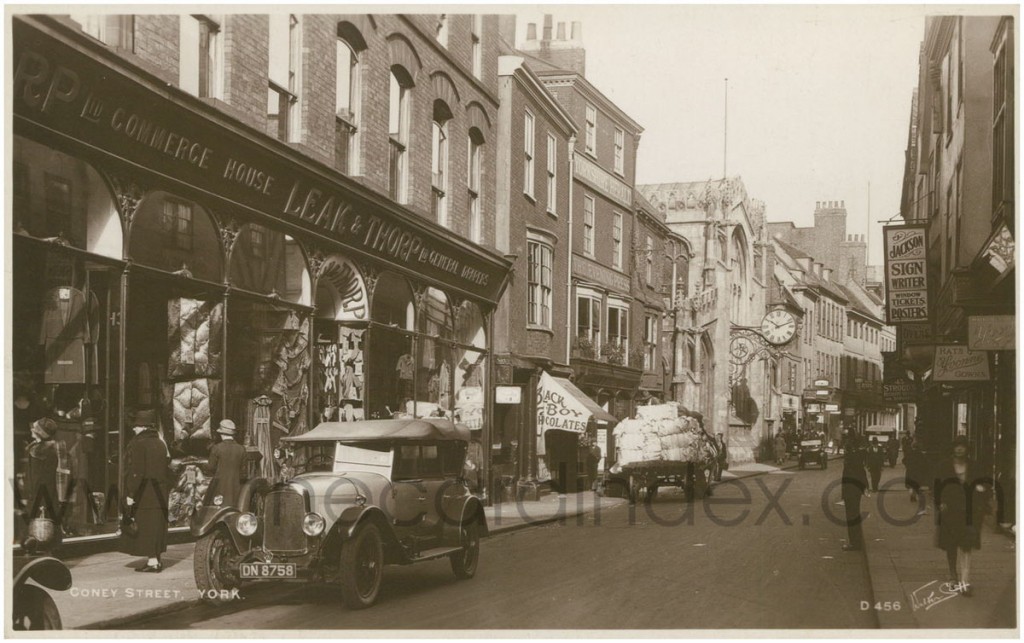
Coney Street, 1930s (source: thecardindex.com)
At some point it seems to have lost its connection with its layers of history. Maybe around the time I was growing up here in York. I had a look at some old guidebooks I have from the late 1970s/early 80s, to see how it was described. The ‘York Official Guide’ sums up Coney Street rather briefly:
‘One of York’s main shopping streets, with few old buildings left.’
I guess it’s defining ‘old’ in the context of York’s wealth of historic buildings, but it’s a description that looks rather strange now. Thankfully our appreciation of ‘old’ buildings, of place, of heritage, seems to have deepened and widened in the decades since — and of course we can add another few decades to the age of Coney Street’s buildings since that description was written.
A quick look at the Historic England website confirms that Coney Street has many listed buildings, so clearly ‘old’ enough and interesting enough to have that kind of recognition and protection. Some are older in part than they look at the front, as they’ve been extended and raised and refronted as well as having those rather plasticky looking modern shop frontages put into them at ground level.
Look up, and the vertical emphasis is clear. Tall and in some cases very narrow buildings. At street level, more of a horizontal emphasis, for the chainstores and their wide window displays, because that’s what the old style high street expanded into, in streets in town centres like this.
It isn’t just about shops, and what it looks like now. Under our feet, under the setts of the late 20th century repaving and the tarmac patching, under the cardboard and sleeping bags in the doorways of the closed shops, there’s an ancient way, an ancient thoroughfare, and the homes and workplaces of centuries upon centuries of people, in the grand buildings fronting the street, the smaller buildings fronting the street, and the many plots behind, stretching back to the river or to backs of the plots of the neighbouring streets. Do we think much about that when we walk down Coney Street looking in the shop windows?
If you walk along Coney Street when it’s empty and quiet and look up, there are many stories in the various storeys above ground-floor level. Windows re-set, widened, facades added on, some rather bland frontages from postwar rebuilding after bomb damage in the area around St Martin’s church.
Merely being old doesn’t make something interesting though, does it. We have to feel connected to it. And in some way that’s deeper than just going in to a shop to buy a pair of trousers or a fruit bowl. Perhaps we haven’t felt like that on Coney Street. Maybe the meaningful memories and connections were to stores that aren’t there anymore, such as Woolworths, where many teenagers once congregated on Saturday afternoons.
We appear to be reaching the end of that period in our history where going into town to shop was a regular part of daily life, or a looked-forward-to weekend activity, and the empty shops on Coney Street reflect that.
What will happen in the longer term? Perhaps the larger retail units will be divided into smaller units, with shops shrinking back from the massive size some of them had in the later 20th century. This seems to have happened already with the old BHS store.
Shops perhaps reverting to residential? Many of those buildings would look rather grand and handsome if their 20th century shopfronts were replaced with a traditional front door and window. But then it is still a busy and noisy thoroughfare, and perhaps too rowdy for residential.
Though it was nice and quiet on Christmas Day when I took the photos used to illustrate this page. It appears to have taken me six months to write the page to go with them, and in that time the concerns over Coney Street continue, with the local Press reporting regularly on shops that may be closing, or have been saved from closure, and recently suggesting that the street is experiencing a ‘mini-revival’, as a phone shop has opened near Waterstones.
Perhaps more interesting than that, at least I thought so, was the ‘pop-up shop’ called Fabrication, which was temporarily based in one of the empty retail units, and I hope it’s still there.
It was selling many beautiful carefully-crafted things, and spending money here would mean money going to the makers of the beautiful things in a direct and pleasing fashion. Perhaps Coney Street needs to have more of that kind of thing, and perhaps in time it will.
. . . . . .
Thank you for your virtual coffees in support of this long-running record of York and its changes.





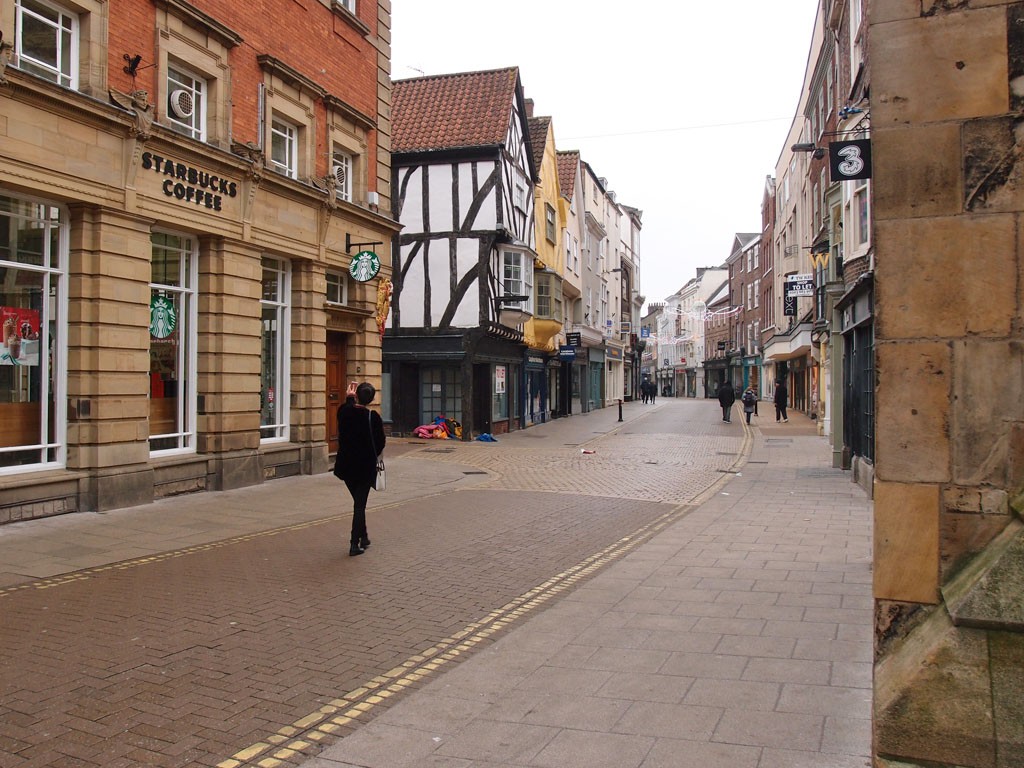
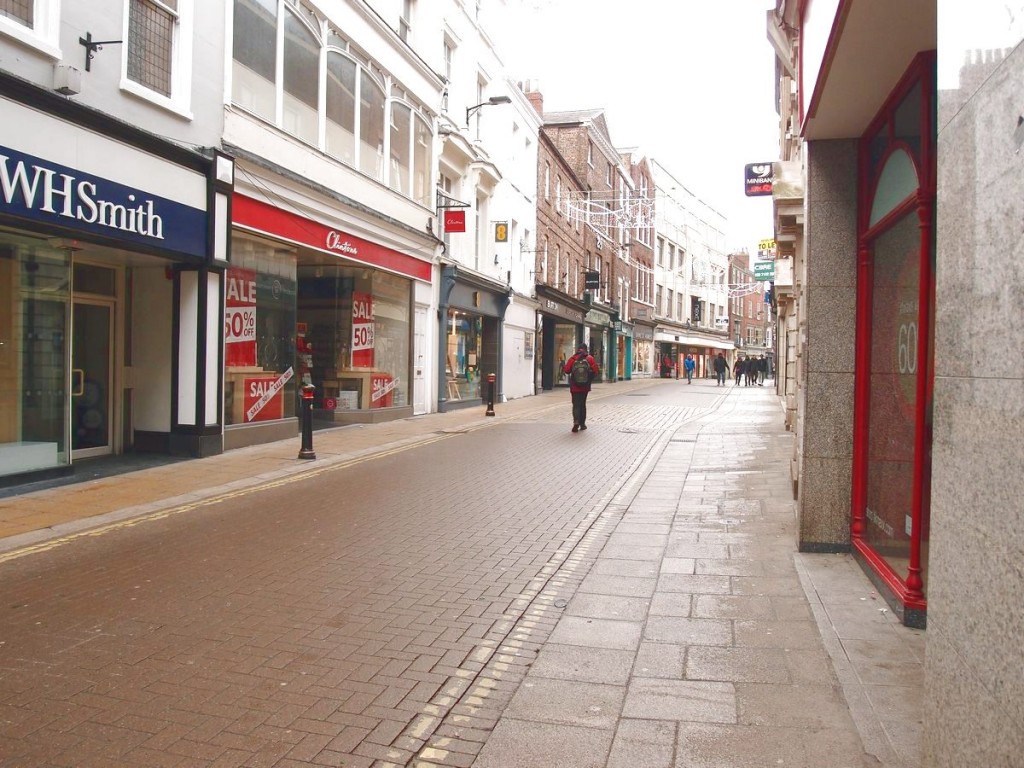
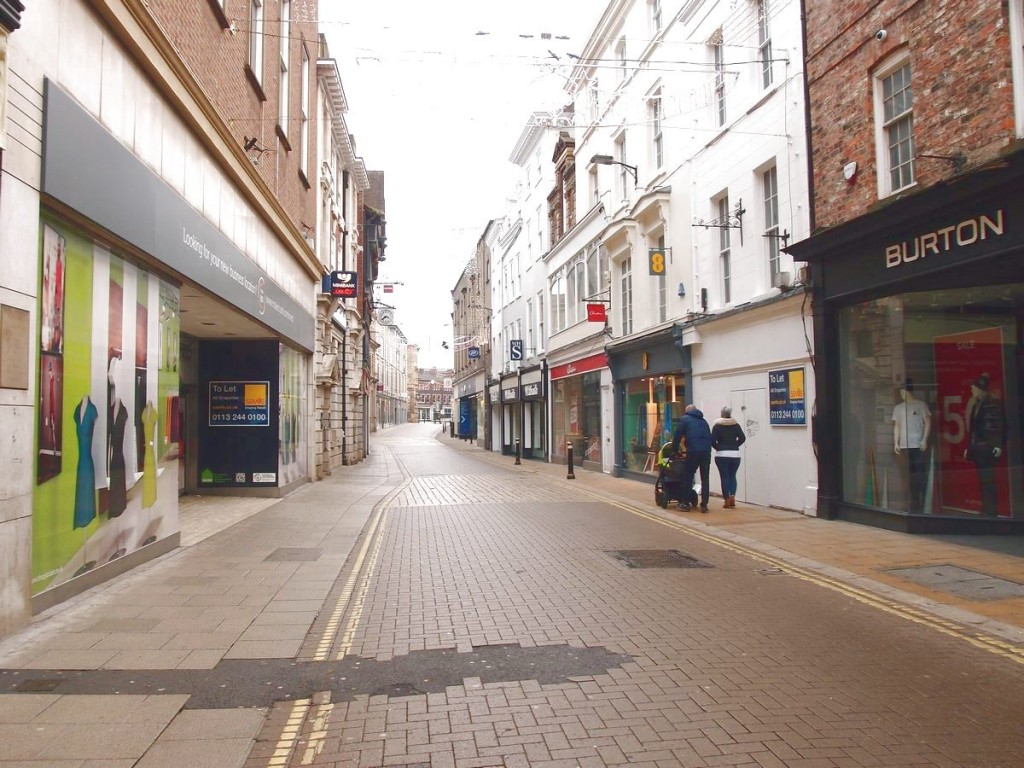
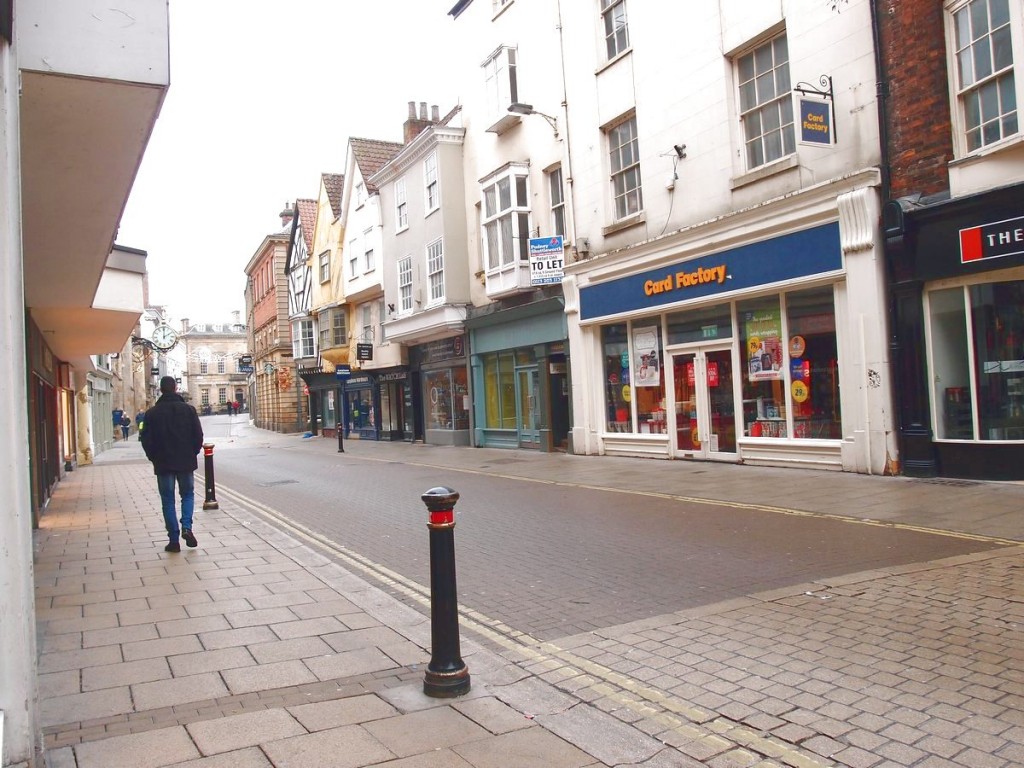
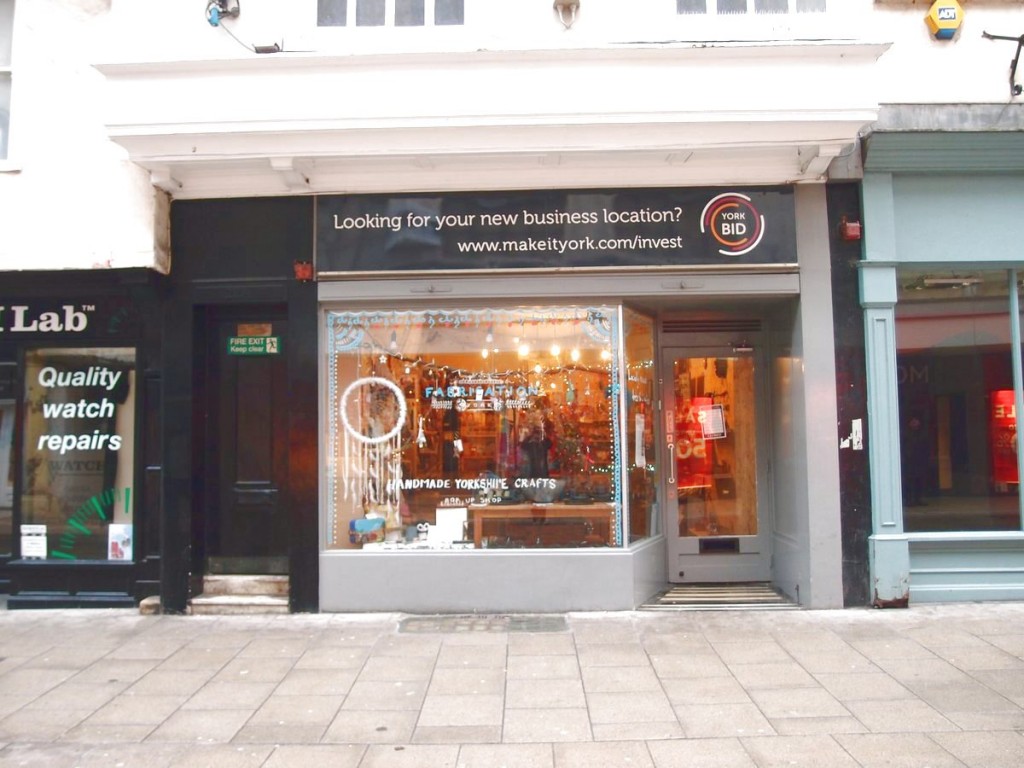
I left York in 1975 when I married and moved to Cambridge.
During the time of starting work ( 1962 to leaving ) Coney Street was a busy vibrant and central place to shop.
I bought perfume at the chemist / perfumery shop at the Guildhall end and my engagement ring was a really important purchase from the jewellers facing Leak and Thorpe ( were I bought my first Wonderbra ! )
There was a fabulous and authentic Chinese restaurant above a shop close to the centre of the street.
My mother would refer to girls of ill repute being ” as well known as the Coney Street clock ”
With girlfriends I would spent practically every Saturday afternoon shopping there .
This followed a drink before starting at the Star in Stonegate and ended with tea with those wonderful cake trolleys at Betty’s
I cannot understand how with its long history it was ever allowed to have such dreadful and common shop frontages imposed upon it.
Surely the answer to it thriving again is to make it once again individual Not any town any where as it became over the years .Tourists flock to the street such as Petergate because they are different.
Come on councillors show some initiative and demand quality in this historic street.